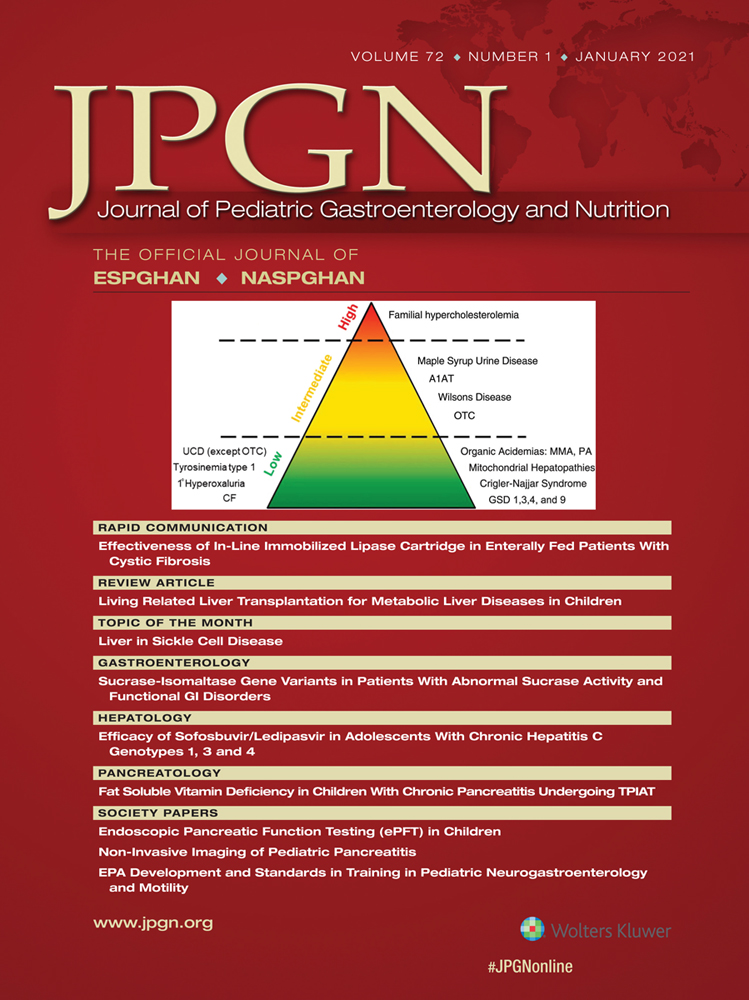Factors Associated With Success and Failure of Weaning Children From Prolonged Enteral Nutrition
A Retrospective Cohort Study
Supplemental digital content is available for this article. Direct URL citations appear in the printed text, and links to the digital files are provided in the HTML text of this article on the journal's Web site (www.jpgn.org).
The authors report no conflicts of interest.
ABSTRACT
Objectives:
The aims of the present study were to assess the efficacy of a tube weaning program, and to identify factors associated with success and failure.
Methods:
This was a retrospective cohort study including all pediatric patients on enteral nutrition (EN) for ≥6 months for whom at least 1 attempt of weaning was performed in a single tertiary referral center from 2012 to 2017, with a minimum follow-up of 6 months after EN discontinuation. Weaning program was individualized to each child. Weaning success was defined a priori. Factors associated with success were investigated using multivariate analysis.
Results:
Ninety-four patients were enrolled, in whom a total of 114 attempts of weaning were performed at a median age of 51 ± 40 months. Success was achieved in 80 attempts (success rate of 70%). One hundred three (92%) weaning attempts were performed at home with a follow-up in the outpatient clinic, mostly (74%) by a progressive (>1 month) reduction of tube feeding. Patients who required psychological support during weaning had more failures than patients who did not (odds ratio = 5.7, 95% confidence interval [1.2–27.0], P = 0.03). The presence of impaired oral feeding skills at the time of EN discontinuation was also predictive of failure (odds ratio = 6.2, 95% confidence interval [0.05–0.5], P = 0.005).
Conclusions:
Our progressive, mostly outpatient-based, patient-tailored program of weaning from EN is effective for tube-dependent children. Children who need psychological support during weaning and those who present impaired oral feeding skills represent a subgroup of at-risk patients for whom alternative weaning strategies may need to be considered.




